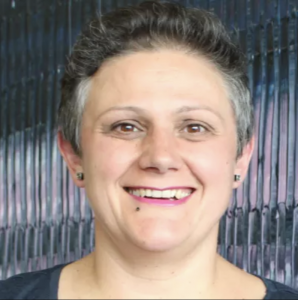
Associate Professor Vera Ignjatovic, Co-Group Leader, Haematology Research, Murdoch Children’s Research Institute.
Blood test results are compared to what’s considered ‘normal’ in order to work out suitable treatment, but this vital step is missing in diagnosing children.
The majority of blood test reference ranges are based on adults – and don’t accurately tell us what’s normal and healthy for children.
Alternatively many pathology laboratories borrow children’s reference ranges from other sources that aren’t matched to their patient population.
Most laboratories rely on the ‘norms’ from adults or from non-validated information from children (like those from non-healthy children, or reference ranges established using different machines to test the blood).
This means that children’s test results are currently compared to values that aren’t truly representative of the healthy population of children, and/or are compared to results obtained using a different machine – effectively comparing apples to oranges and not apples to apples.
This can actually lead to misdiagnosis of disease in children.
It may seem odd that our understanding of what defines a ‘healthy state’ is limited for society’s most vulnerable – our babies and our kids. But it becomes problematic when it leads to the misdiagnosis and over-treatment of children who are perfectly healthy when compared to their age-based norms.
Just as children experience disease differently to adults, they also experience profound normal growth and development which makes them different to adults.
This means, in order to know someone is unwell, we have to know how they deviate from normal. Then, in order to work out if someone is getting better we have to know that we’re returning them to normal. And finally, to know that someone is well, we have to know what normal is.
However you cut it, we have to understand normal.
And this what the Haematology Research Team, led by Professor Paul Monagle (Group Leader, Haematology Research, Murdoch Children’s Research Institute) and myself, are working to fix.
Our team leads the multidisciplinary Harmonising Age Pathology Parameters in Kids (or HAPPI Kids, for short) study that focuses on establishing accurate reference ranges for blood components in newborns and children – basically defining what makes them healthy.
The way this works is specialist pathology collectors, who are trained to collect blood samples from babies within three days of birth and from children up to 18-years-old, recruit participants and collect samples.
These blood samples are then analysed in multiple laboratories for a combination of major clinical tests that are frequently ordered as part of routine patient care.
These tests are extensive. They include more than 50 tests specific to biochemistry – testing for things like sodium and creatinine, haematology (platelets and white blood cells), and immunology.
The results of these tests are then analysed by scientists trained in the field of bioinformatics – which combines mathematics, statistics and computer science to solve complex biological problems – in order to establish age-specific reference ranges or normal ranges.
To date, more than 3500 samples have been collected from healthy babies and children around Melbourne, which means we’re building up ‘normal’ reference ranges as we speak.
We’re also working with specialist doctors – like paediatric haematologists and immunologists – throughout the study in order to establish a set of simple, clear guidelines for fellow doctors and laboratory scientists.
This means the information collected in this study can be widely distributed to medical professionals around the world – giving them a precise pathway to better diagnose sick children.
The biology of normal growth and development is fundamental to human survival and for too long we haven’t had the information we need to adequately diagnose and treat children.
Our research aims to rectify this by understanding how to prevent, diagnose and treat disease in children, so we can help our kids have the best possible start to life.
This article was originally published in Pursuit by the University of Melbourne